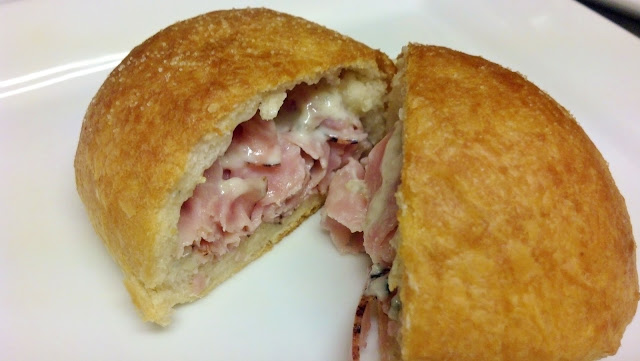
Do you understand the difference between the Use By and the Sell By dates on your foods?
Most people get a bit confused...I know that it's something that my husband & I have had discussions/arguments over quite frequently. He still refuses to drink milk if we have reached the "Sell By" date on the carton (even if it's just being opened) while I, on the other hand, will continue to consume milk after the date on the carton unless it has a funny/spoiled smell developing. To be quite honest I have to admit that no one has ever really broke it all down for me.
So, since I have come across this and have found that others have had the same discussion in their household, I thought that I'd do a little research and help to clear up the big debate...Do Eat/Drink/Use OR Do Not To Eat/Drink/Use
Types of Dates
A "Sell-By" Date: The date used for the store to determine how long to display the product for sale. Best Safety Practice: Buy the product before the date expires.
A "Best if Used By (or Before)" Date: The date determined to allow the best flavor or quality of a product. It is not a purchase or safety date. If you want your food to taste its best, consume the product before this date.
A "Use-By" Date: The date determined by the product manufacturer to be the last date recommended for the use of
the product while at peak quality.
"Closed or coded dates" are packing numbers for use by the
manufacturer. You've seen these dates, they don't help us consumers at all...without a bit of decoding.
 Q: Do I have to be concerned if purchasing a product on or after a printed/stamped date?
Q: Do I have to be concerned if purchasing a product on or after a printed/stamped date?
A: The product dates are not always in reference to how long you store a product at home or how long before use after purchasing the product. The Exception: "Use-By" dates which usually refer to best quality and are not
safety dates.
Q: Can I still use a product if the date has expired at home?
A: A product should
be safe, wholesome and of good quality if handled properly and kept at 40 °F or
below. See the refrigerator charts below for storage times of dated
products.
If product has a "Use-By" date, follow that date. If product has a
"sell-by" date or no date, cook or freeze the product by the times on the chart
below.
 Q: What are signs that I should discard a product regardless of the stamped/printed date?
Q: What are signs that I should discard a product regardless of the stamped/printed date?
A: If there is discoloration, a off appearance/odor/flavor, it could be caused by bacterial spoilage. Food that has developed any of these should not be used for quality purposes.
Q: What constitutes something being "mishandled"?
A: The following are all examples of mishandled food that could cause food borne bacteria to grow and food borne illnesses to develop:
- Foods that have been defrosted at room temperature for more than two hours
- Foods that have been cross contaminated
- Foods that have been handled by someone who does not practice sanitation (Follow the product's handling & preparation guide on the package for safety.)
Q: What do can codes mean?
A: Can codes are typically a series of letters and/or numbers that are associated with the time a product is manufactured. They allow products to be tracked during shipment. It also allows the manufacturer to rotate stock products and easily locate products should there be a recall event.
Q: How can I determine what a can code means?
A: There is no website or manual for the consumer to interpret what a can code means. It is not intended to be interpreted as a "Use-By" date.
Q: What does the date on my can mean?
A: If a date is not labeled as "Use By" or "Sell By", it is considered and "Open" or "Calender" date and is usually "Best If Used By" dates labeled for a product's peak quality.
Q: How long can I store canned vegetables & fruits?
A: In general, high-acid canned foods such as tomatoes, grapefruit and pineapple
will retain best quality on the shelf for 12 to 18 months; low-acid canned foods
such as meat, poultry, fish and most vegetables will retain best quality on the
shelf for 2 to 5 years — if the can remains in good condition and has been
stored in a cool, clean, dry place. If a can begins to bulge in any way, dispose of the unopened product and do not use.
Q: Can I still use my eggs if it is beyond the date on the egg carton?

A: First, always purchase eggs
before the "Sell-By" or "Expiration" date printed on the carton. According to the
USDA Food Safety & Inspection Service, yes you can still use/consume eggs after the date on the carton provided that they have been stored in the coldest part of your refrigerator
(not the door). For best quality, use eggs within 3 to 5 weeks of the date you purchase them.
The "sell-by" date will usually expire during that length of time, but the eggs
are perfectly safe to use.
In Regards To Infant Formula:
ALL infant formula must have a "Use-By" date on the product label per Federal regulations under FDA inspection. The "Use-By" date is selected by the manufacturer, packer or distributor of the product on the basis of product analysis throughout its shelf life, tests, or other information. It is also based on the conditions of handling, storage, preparation, and use printed on the label.
Do not buy or use baby formula after the "Use-By" date printed on the label/container.
Why? - According to the
USDA Food Safety & Inspection Service, if consumed by that date, the formula or food must
contain not less than the quantity of each nutrient as described on the label.
Formula must maintain an acceptable quality to pass through an ordinary bottle
nipple. If stored too long, formula can separate and clog the nipple.
TABLES
Refrigerator Home Storage (at 40 °F or below) of Fresh or Uncooked
Products
If product has a "use-by" date, follow that date.
If
product has a "sell-by" date or no date, cook or freeze the product by the times
on the following chart. |
|
| Refrigerator Storage of Fresh or Uncooked Products
|
| Product |
Storage Times After
Purchase |
| Poultry |
1 or 2 days |
| Beef, Veal, Pork and Lamb |
3 to 5 days |
| Ground Meat and Ground Poultry |
1 or 2 days |
| Fresh Variety Meats (Liver, Tongue, Brain, Kidneys,
Heart, Chitterlings) |
1 or 2 days |
| Cured Ham, Cook-Before-Eating |
5 to 7 days |
| Sausage from Pork, Beef or Turkey, Uncooked |
1 or 2 days |
| Eggs |
3 to 5
weeks |
|
|
Refrigerator Home Storage (at 40 °F or below) of Processed Products
Sealed at Plant
If product has a "use-by" date, follow that
date.
If product has a "sell-by" or no date, cook or freeze the product by
the times on the following chart.
|
|
| Refrigerator Storage of Processed Products Sealed at
Plant |
| Processed Product |
Unopened, After
Purchase |
After Opening |
| Cooked Poultry |
3 to 4 days |
3 to 4 days |
| Cooked Sausage |
3 to 4 days |
3 to 4 days |
| Sausage, Hard/Dry, shelf-stable |
6 weeks/pantry |
3 weeks |
| Corned Beef, uncooked, in pouch with
pickling juices |
5 to 7 days |
3 to 4 days |
| Vacuum-packed Dinners, Commercial Brand
with USDA seal |
2 weeks |
3 to 4 days |
| Bacon |
2 weeks |
7 days |
| Hot dogs |
2 weeks |
1 week |
| Luncheon meat |
2 weeks |
3 to 5 days |
| Ham, fully cooked |
7 days |
slices, 3 days; whole, 7 days |
| Ham, canned, labeled "keep
refrigerated" |
9 months |
3 to 4 days |
| Ham, canned, shelf stable |
2 years/pantry |
3 to 5 days |
| Canned Meat and Poultry, shelf stable |
2 to 5 years/pantry |
3 to 4 days |
|
|
|
|






.jpg)










